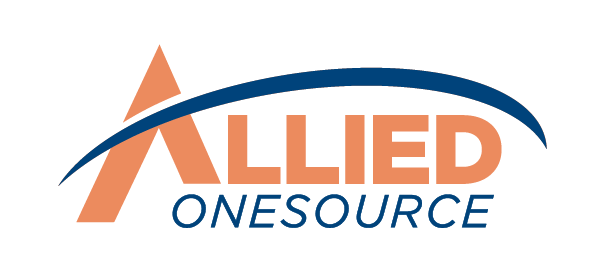High-Turnover Roles in Warehousing: How to Create an Engaging Workplace That Retains Talent
If you manage a warehouse operation, you probably know this pattern well. An employee quits; you rush to fill the position, train the replacement, and hope they stay longer than a few weeks. But the cycle repeats. Turnover in warehouse roles creates ongoing challenges that affect your entire operation. HR departments work overtime on recruitment, supervisors manage understaffed teams, and remaining workers face increased pressure to meet demand.
This constant turnover creates serious problems. High turnover increases training costs, reduces productivity, and raises safety risks. When employees regularly leave, maintaining smooth operations becomes nearly impossible.
You may have already tried standard solutions like wage increases, sign-on bonuses, or basic perks. If workers continue leaving despite these efforts, deeper issues require attention. This article provides proven strategies to address the root causes of warehousing employee turnover and build lasting workforce stability.
Why Workers Leave: The Main Drivers of Turnover
Understanding warehousing employee retention starts with identifying why workers leave. While some turnover is normal, certain patterns appear consistently across the industry. The most common departure reasons include physical demands, scheduling issues, and limited growth opportunities.
Physically Demanding Work That Leads to Burnout
Warehouse roles require significant physical effort. Long shifts on concrete floors, repetitive lifting, extreme temperatures, and demanding productivity targets create cumulative stress on workers' bodies. Over time, this physical strain leads to burnout and resignation.
The U.S. Bureau of Labor Statistics reported 4.5 workplace injuries per 100 full-time warehouse workers in 2023, totaling 265,700 cases.¹ This rate is nearly double the average across all private industries. For many employees, the physical costs eventually outweigh the financial benefits.
Unpredictable Scheduling Disrupts Work-Life Balance
Warehouse workloads fluctuate based on seasonal demands and customer orders. When this creates last-minute schedule changes, mandatory overtime, or irregular shift patterns, employees struggle to maintain stability outside work.
Workers who cannot predict their weekly schedules find it difficult to arrange childcare, plan family activities, or manage transportation. This uncertainty often drives employees to seek more predictable employment, even at lower wages.
Limited Career Advancement Opportunities
Many people accept warehouse positions as temporary work or entry-level opportunities. When companies offer no clear advancement paths, training programs, or skill development, workers lose motivation quickly. Employees who see no progression beyond their current role often leave within their first year to find better long-term prospects.
Proven Retention Strategies for Warehousing Employee Retention
Creating lasting warehousing employee retention requires building an environment where people choose to stay. Rather than expensive overhauls or superficial perks, focus on fundamental workplace improvements around safety, stability, respect, and growth opportunities. To do that:
Build a Workplace Culture That Supports Employee Success
Workplace culture extends beyond motivational posters and company slogans. Culture reflects how employees feel about their daily work experience. Strong workplace culture directly impacts retention by creating an environment where people feel valued and supported.
Essential culture-building strategies include training managers as effective people leaders rather than just task supervisors. Supervisors set the tone for daily operations and employee interactions. Prioritizing worker safety through well-maintained equipment and clear safety protocols demonstrates genuine care for employee well-being while ensuring compliance.
Creating regular feedback channels allows employees to voice concerns and suggestions, showing that their input matters to management decisions. Implementing consistent recognition programs ensures hard work receives frequent, specific acknowledgment rather than annual performance reviews only.
Finally, offering competitive wages that reflect the physical and mental demands of warehouse work establishes fair compensation as the foundation for retention efforts.
A review study found that toxic company culture was 10 times more predictive of high turnover than compensation levels.² This research emphasizes that daily interactions between coworkers and managers have a greater retention impact than salary alone.
Create Clear Growth Pathways for Hourly Employees
Retention improves significantly when employees see future opportunities within their current company. Many warehouse workers do not expect career development options, making growth programs particularly effective for improving retention.
Basic training and skill development programs communicate a clear message that employees have advancement potential. Cross-training employees in multiple warehouse functions keeps work interesting while building valuable skills. Creating advancement charts that show progression from entry-level picker to lead, or supervisor roles helps workers visualize their career path.
Mentorship programs that pair experienced workers with new employees provide guidance and support during the critical first months. Tuition reimbursement or certification sponsorship programs demonstrate investment in employee development beyond immediate job requirements.
According to SHRM research, companies investing in employee development achieve 34 percent higher retention rates than those without development programs.³ When employees see connections between current roles and future opportunities, they commit to longer employment terms.
Improve Scheduling Practices to Support Work-Life Balance
Unpredictable schedules undermine all other retention efforts. When employees cannot plan their personal lives, benefits, culture, and competitive pay become less important. Improving scheduling practices represents one of the highest-impact retention strategies available.
Effective scheduling improvements include establishing regular shift patterns that allow employees to plan activities outside work. Offering flexibility through shift swaps or accommodating working parents' needs shows consideration for employee circumstances.
Modern scheduling software provides workers with advance notice and mobile access to their schedules. Platforms like Deputy, When I Work, or Shiftboard give employees greater autonomy and schedule visibility, both proven factors in improving job satisfaction.
Recognize Performance Beyond Speed and Productivity Metrics
Recognition programs should extend beyond employee-of-the-month awards to acknowledge diverse contributions. In fast-paced warehouse environments, measuring only speed or quota achievement can make workers feel undervalued as individuals.
Effective recognition targets teamwork and safety practices alongside individual performance. Acknowledging initiative and reliability, such as punctuality, helping colleagues, or learning additional skills, reinforces positive workplace behaviors.
Celebrating tenure milestones like one-year anniversaries or seasonal employment commitments shows appreciation for employee loyalty and commitment.
Research indicates that 55 percent of employee engagement stems from non-financial recognition programs.⁴ Employees who feel acknowledged for their contributions are significantly less likely to seek employment elsewhere.
Ensure Wages Reflect Current Market Conditions
Warehouse roles require significant physical and mental effort. When compensation fails to match these demands, turnover becomes inevitable. While competitive wages alone do not guarantee retention, they provide the foundation for all other retention strategies.
Staying competitive requires benchmarking pay against local and industry standards at least annually. Offering shift differentials for evening, night, or weekend work acknowledges the additional challenges these schedules create.
Performance bonuses for peak seasons or attendance milestones reward reliability and commitment during critical periods. Competitive compensation signals that your company values its workforce and prioritizes retention over constant recruitment.
Partner With Retention-Focused Staffing Solutions
Effective warehousing employee retention does not require handling every challenge independently. Staffing firms that prioritize long-term placements over quick hires can significantly improve your retention outcomes.
At Allied OneSource, we focus on matching talent based on both skills and cultural fit, ensuring better alignment from the start. We support comprehensive onboarding processes that help new hires feel prepared and engaged from day one.
Our feedback systems help you understand retention patterns and departure reasons, enabling data-driven improvements to your retention strategies. We design customized retention programs tailored to your specific warehouse environment and workforce goals.
Quality staffing partnerships should build workforce stability, not just fill immediate openings. This approach creates lasting value for warehouse operations and employee satisfaction.
Building Long-Term Workforce Stability
High turnover in warehouse roles is challenging but not inevitable. By addressing physical demands, improving scheduling practices, creating advancement opportunities, and building a supportive workplace culture, you can break the cycle of constant recruitment and training.
Read More: Future Forward: How To Keep Up with Workplace Transformations in 2024 Onwards
The most effective retention strategies focus on treating employees as valuable team members rather than replaceable workers. When people feel respected, supported, and valued, they choose to stay.
Ready To Develop a Strategic Approach to Warehousing Employee Retention?
Allied OneSource helps employers implement proven retention solutions for warehouse environments.Contact us to discuss building a stronger, more stable workforce for your operation.
References
- Bureau of Labor Statistics. (2024, November 8). Employer-reported workplace injuries and illnesses, 2023 (USDL-24-2268). https://www.bls.gov/news.release/osh.nr0.htm
- Sull, D., Sull, C., & Zweig, B. (2022, January 11). Toxic culture is driving the great resignation. MIT Sloan Management Review. https://sloanreview.mit.edu/article/toxic-culture-is-driving-the-great-resignation/
- Gabriel, B. (2025, January 6). How to level the training playing field. SHRM. https://www.shrm.org/executive-network/insights/how-to-level-training-playing-field
- McKinsey & Company. (2022, March 28). Money can’t buy your employees’ loyalty. https://www.mckinsey.com/capabilities/people-and-organizational-performance/our-insights/the-organization-blog/money-cant-buy-your-employees-loyalty











